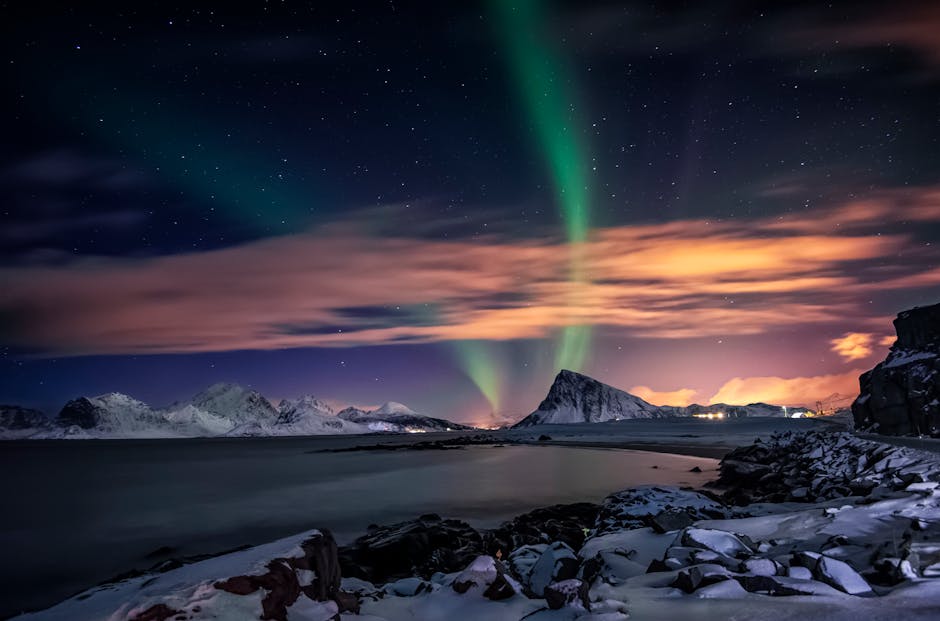**
The Physics of the Northern Lights
The Northern Lights (Aurora Borealis) paint the night sky with ethereal greens, reds, and purples, captivating observers for millennia. But behind this celestial spectacle lies a fascinating interplay of solar physics and Earth’s atmosphere. Here’s how it works.
How the Sun Powers the Aurora
The phenomenon begins with the Sun’s solar wind—a stream of charged particles (electrons and protons) ejected into space. During solar storms or coronal mass ejections (CMEs), this wind intensifies, sending billions of particles racing toward Earth.
Earth’s Magnetic Field: The Invisible Guide
Our planet’s magnetic field channels these particles toward the polar regions, acting like a cosmic funnel. This field, generated by Earth’s molten iron core, deflects most solar radiation but directs some particles to the North and South Poles.
Why Auroras Glow: The Science of Light Emission
When solar particles collide with oxygen and nitrogen in the upper atmosphere (60–400 km altitude), they excite these gases. As atoms return to their normal state, they release energy as light:
- Green (most common): Oxygen at 100–300 km
- Red: Oxygen above 300 km
- Blue/Purple: Nitrogen at lower altitudes
What Makes the Lights “Dance”?
The aurora’s movement stems from magnetic reconnection—a process where stressed magnetic field lines snap and realign, releasing energy that accelerates particles. This creates the shimmering, wave-like patterns.
When and Where to See the Northern Lights
Best viewing conditions include:
✔ High solar activity (peak in 2025)
✔ Geomagnetic storms (can extend visibility to lower latitudes)
✔ Dark, clear skies (October–March near the Arctic Circle)
Auroras on Other Planets
Earth isn’t alone—Jupiter’s intense magnetic field produces brilliant auroras, while Mars has faint glows due to its weak magnetism. Even exoplanets may host similar displays!
Conclusion
The Northern Lights are a stunning reminder of Earth’s connection to the Sun. By unraveling their physics, we glimpse the universe’s invisible forces at work.
**




